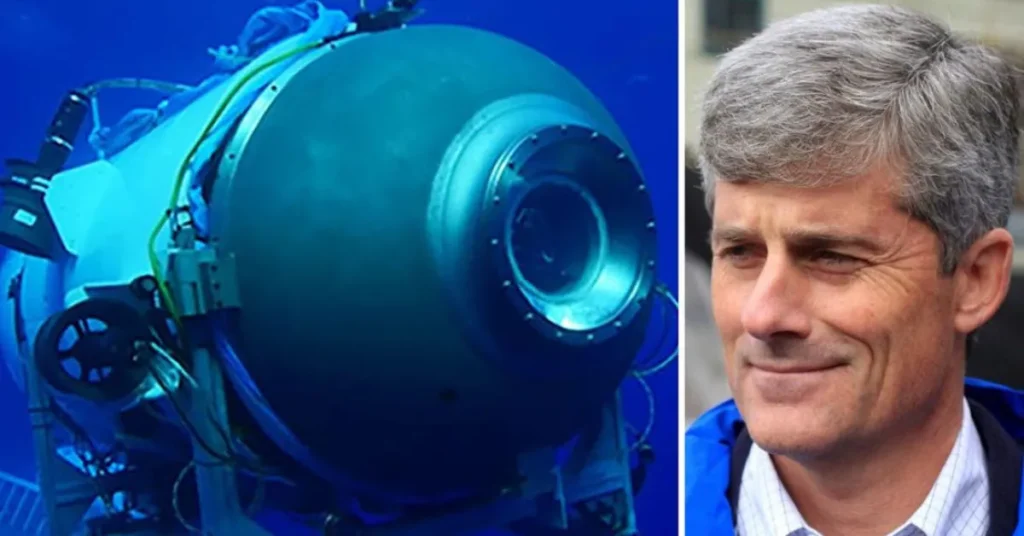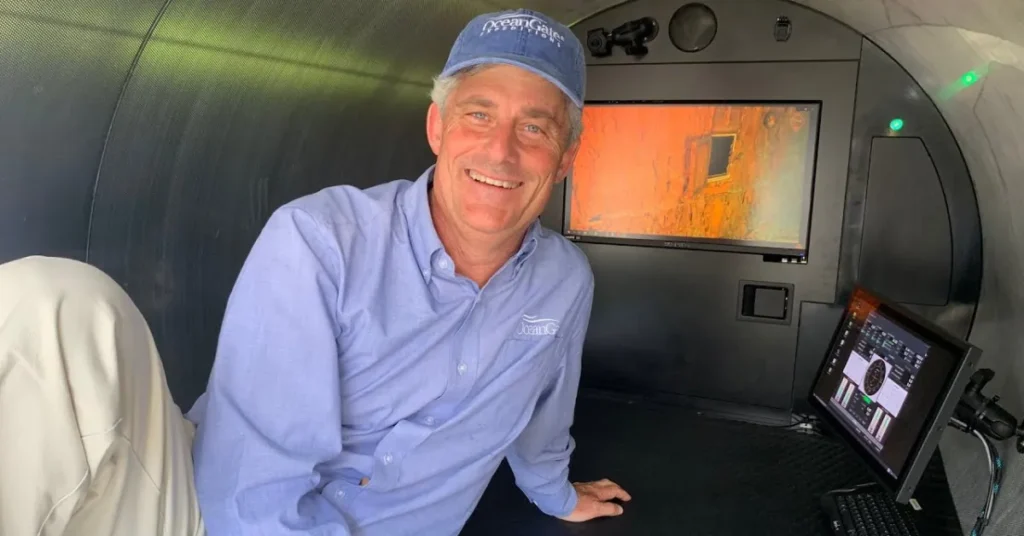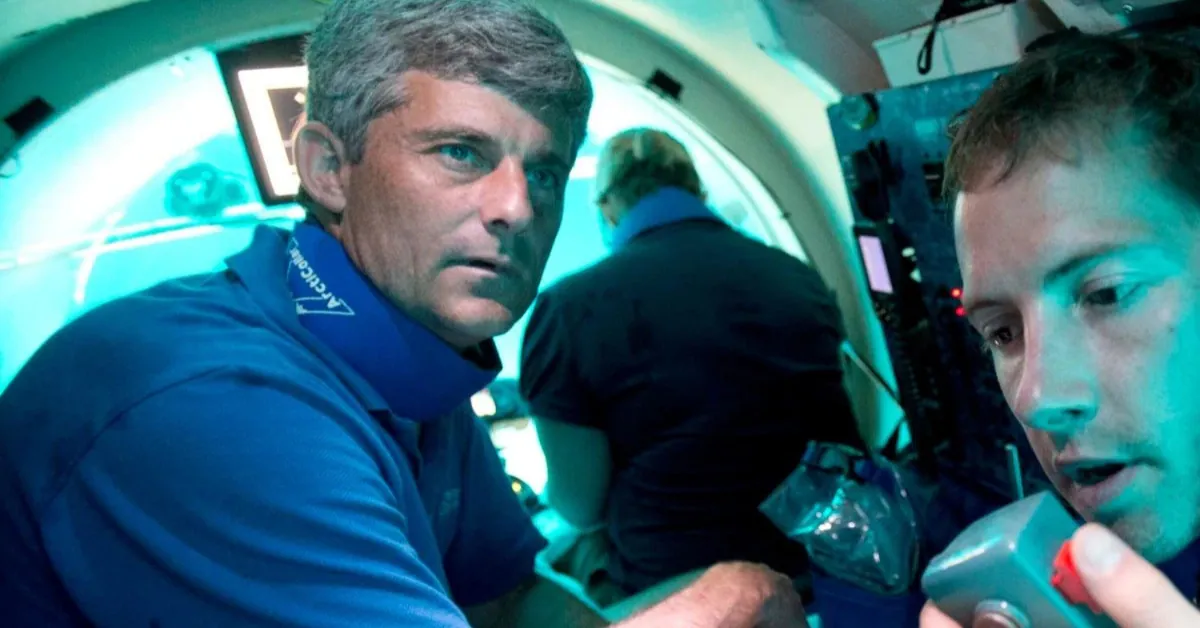Stockton Rush Net Worth, Wife, Children, Age and Died
Stockton Rush, the CEO and co-founder of OceanGate, Stockton Rush net worth ranging from $12 million to $25 million at the time of his death in June 2023. His wife, Wendy Rush, is a descendant of two prominent American figures. Stockton Rush had two children with Wendy, a son and a daughter, though their names have not been publicly disclosed for privacy reasons. Born on March 27, 1972, Stockton Rush tragically passed away on June 18, 2023, at the age of 51. He died during an expedition to the Titanic wreckage, aboard the Titan submersible, along with four other passengers, including British businessman Hamish Harding and Pakistani nationals Shahzada Dawood and his son Suleman Dawood.
| Attribute | Details |
|---|---|
| Date of Birth | 1962 |
| Birth Place | United States |
| Age | 51 years (at the time of passing in 2023) |
| Residence | United States |
| Country | United States |
| Profession | Entrepreneur, Founder of OceanGate Inc. |
| Education | Princeton University (Degree in Aerospace Engineering) |
| Father | will update soon |
| Mother | will update soon |
| Nationality | American |
| Siblings | will update soon |
| Brother | will update soon |
| Religion | will update soon |
| Horoscope | will update soon |
| Spouse | Wendy Rush |
| Weight | will update soon |
| Height | will update soon |
| Stockton Rush Net Worth | $12 million – $25 million (at the time of passing) |
Stockton Rush Net Worth at the Time of His Passing
Stockton Rush, the founder of OceanGate Inc., had an estimated net worth between $12 million and $25 million at the time of his passing. His wealth was largely derived from his leadership and entrepreneurial work in the aerospace and marine industries, where he made significant strides in deep-sea exploration. His company, OceanGate, became famous for conducting expeditions to the wreckage of the Titanic, one of the most iconic and challenging deep-sea missions. This elevated his profile in both the scientific community and the business world.
The Role of OceanGate Inc. in Stockton Rush’s Wealth

OceanGate was founded by Stockton Rush in 2009 with the aim of making deep-sea exploration more accessible to researchers and adventurers alike. Under his leadership, the company was at the forefront of designing and deploying submersible vehicles capable of reaching extreme ocean depths. The company gained recognition for its cutting-edge technology and its high-profile Titanic expeditions. OceanGate attracted substantial financial support from private investors, including technology developers and research institutions, who shared Rush’s vision for advancing marine science. This financial backing played a significant role in building his wealth.
The Financial Challenges and Impact on His Net Worth
While Stockton Rush’s ventures brought in significant investments, deep-sea exploration comes with its own set of challenges. The operational and research costs associated with building submersibles and conducting deep-sea expeditions are extraordinarily high. The technological requirements, combined with the risks involved in these missions, meant that OceanGate had to raise substantial funds to stay operational. As a result, Stockton Rush’s net worth was not static; it fluctuated over time, largely depending on the financial success and the operational costs of the company. Despite these challenges, Rush’s leadership and the innovative work of OceanGate left a lasting impact on the world of deep-sea exploration.
recent read:
Stockton Rush Wife, Wendy Rush
Stockton Rush was married to Wendy Rush, a professional with an impressive background in marine exploration and philanthropy. Wendy was not only an integral part of Stockton’s personal life but also played a crucial role in the professional success of OceanGate. She served as the Director of Communications for the company, where she contributed to the organization’s outreach efforts and supported Stockton’s ambitious vision for expanding deep-sea exploration. Her expertise in communication and her connection to the mission of OceanGate made her a valuable partner in both business and personal life.
Wendy Rush Professional Role and Contributions
In her role as Director of Communications at OceanGate, Wendy Rush helped shape the public image of the company, particularly in conveying its goals and the significance of its expeditions. Through her work, she helped foster relationships with stakeholders, including investors, research institutions, and media outlets, all of which were vital to the success of the company. Wendy’s background in marine exploration, combined with her philanthropic efforts, aligned with Stockton’s mission of advancing deep-sea research and exploration. Her dedication to these causes was a reflection of the shared commitment between the couple to push the boundaries of what was possible in the world of underwater exploration.
Stockton Rush Family Life and Privacy
While Stockton Rush and Wendy Rush were public figures due to their involvement in OceanGate, they chose to keep their family life private. The couple had children, but unlike Stockton’s professional endeavors, which were often in the media spotlight, they made a conscious effort to shield their children from public attention. Details about their children and family life were rarely shared, demonstrating the couple’s preference for privacy despite their public roles. This choice allowed them to maintain a sense of normalcy and separation between their personal lives and the high-profile nature of Stockton’s work with OceanGate.
Stockton Rush Age and Early Life
Stockton Rush was born in 1962 in the United States, where he developed a strong passion for engineering and technology from an early age. His curiosity and drive to explore new frontiers were evident throughout his youth, and he later channeled these interests into his professional endeavors. His birth in 1962 placed him in the generation that witnessed the rapid evolution of technology, especially in fields like aerospace and marine exploration, which would go on to define his career. These early influences helped shape Stockton’s path, ultimately leading to the founding of OceanGate Inc. and his pursuit of ambitious projects aimed at advancing ocean exploration.
Stockton Rush at the Time of His Passing
At the time of Stockton Rush’s tragic passing in 2023, he was 61 years old. Despite his relatively young age, he had already accomplished remarkable feats in his career, particularly in the field of deep-sea exploration. His innovative work with OceanGate, including the development of submersible vehicles for underwater exploration, marked a significant contribution to both the marine industry and scientific research. Although his life was cut short, Stockton’s legacy as a visionary in ocean exploration left an indelible impact on the field and the people who worked with him. His career was a testament to the drive, creativity, and passion he brought to the challenge of pushing the boundaries of what is possible in ocean exploration.
The Tragic Death of Stockton Rush
Stockton Rush tragically passed away on June 18, 2023, during a deep-sea expedition to the wreck of the Titanic. He was aboard the Titan submersible, a vessel designed and built by his company, OceanGate Inc. The expedition was meant to offer a unique opportunity to explore the Titanic’s remains, a popular yet perilous location at the bottom of the North Atlantic Ocean. However, the mission took a catastrophic turn when the submersible suffered a structural failure and imploded during its descent to the ocean floor.
The Events Leading to Stockton Rush Passing

Approximately 1 hour and 45 minutes into the dive, the Titan submersible lost contact with its mother ship, which was positioned at the surface. This loss of communication set off a search and rescue operation led by the U.S. Coast Guard and other agencies, as the vessel’s sudden disappearance raised immediate concerns. After extensive efforts to locate the submersible, the Coast Guard confirmed that the Titan had experienced a fatal implosion, leading to the instant death of all five individuals aboard, including Stockton Rush. The details of the disaster shocked the world and sparked widespread discussions on the safety of deep-sea tourism and the risks involved in private exploration ventures.
Stockton Rush’s tragic death, alongside the four other lives lost in the incident, underscored the inherent dangers of deep-sea exploration and highlighted the need for stricter safety measures in such high-risk industries. The event was widely covered in international media, bringing global attention to the fragile nature of human endeavors in the extreme environments of the ocean.
Stockton Rush Vision for the Future
Stockton Rush’s vision for the future centered on expanding the possibilities of human exploration and technological advancements, particularly in the realm of deep-sea exploration. He believed that pushing the boundaries of what was possible would unlock new opportunities for understanding the Earth’s oceans and, in turn, revolutionize scientific research. Rush’s long-term goal was to make underwater exploration accessible to more people, including tourists, scientists, and researchers, by developing submersibles that could reach the deepest parts of the ocean with safety and efficiency.
He envisioned a future where ocean exploration was no longer limited to government-funded projects or large research organizations but was democratized for private ventures as well. Rush was particularly passionate about reducing the cost of such missions, making them more affordable for a broader range of stakeholders, thus promoting a new era of oceanographic exploration. By combining innovation with the growing interest in private space exploration, he saw deep-sea exploration as the next frontier for scientific discovery.
Insights into His Goals and Dreams
Rush’s dreams were rooted in his belief that technology could open new frontiers for human discovery. He was committed to making breakthroughs in the field of submersible technology, focusing on developing safer, more reliable, and more efficient vehicles that could carry humans to the deepest parts of the ocean. A key aspect of his vision was to move away from traditional, heavily regulated approaches to ocean exploration and embrace a more entrepreneurial mindset.
The Rush Legacy
Stockton Rush’s influence on deep-sea exploration continues to shape the industry even after his passing. His pioneering work with OceanGate and his passion for innovation left a lasting mark on the future of underwater technology. In 2025, companies and organizations dedicated to deep-sea exploration are building on his vision by advancing submersible technology, improving safety standards, and making deep-sea research more accessible. While his methods were sometimes controversial, his commitment to pushing boundaries has inspired a new wave of innovation in ocean exploration.
Many industry players are now focusing on refining the technology Rush helped develop, ensuring that his dream of affordable, deep-water exploration becomes a reality. The field is witnessing a surge in interest from both private enterprises and research institutions, eager to explore uncharted territories of the ocean. These efforts are leading to improvements in deep-diving submersibles, autonomous underwater vehicles, and new materials designed to withstand extreme underwater pressures.
How His Company and Other Organizations Are Growing His Legacy in 2025
OceanGate, the company Rush founded, continues to play a crucial role in advancing deep-sea exploration. In 2025, the company has shifted its focus toward enhancing the safety and reliability of submersible expeditions, learning from past challenges while staying true to Rush’s vision. With an emphasis on rigorous testing and collaboration with marine engineers, the company is working to make underwater tourism and scientific research more sustainable.
Other organizations in the field have also embraced aspects of Rush’s mission. Some research institutions are developing AI-powered autonomous submersibles capable of exploring deeper than ever before, reducing risks while expanding scientific knowledge. Private companies have started investing in deep-sea mining and resource exploration, using more advanced technology inspired by Rush’s early ambitions. Additionally, increased partnerships between government agencies and private firms have allowed for more structured and regulated ocean exploration initiatives.
Challenges and Controversies During Stockton Rush’s Career
Stockton Rush, the CEO of OceanGate, has faced numerous challenges and controversies throughout his career, particularly surrounding his leadership of the company and its ambitious deep-sea exploration projects. One of the major issues was his controversial approach to the development of submersibles for underwater expeditions. Critics often pointed to safety concerns, especially with the Titan submersible, which OceanGate used for its deep dives to the Titanic wreck site. Concerns were raised about the lack of independent safety certification and the untested materials used in the submersible’s construction. These issues led to public skepticism and questions about Rush’s commitment to ensuring passenger safety.
Another controversy emerged from Stockton Rush’s disregard for industry standards and warnings from experts in marine engineering. Despite concerns voiced by other submersible engineers and oceanographers, Rush’s company continued to push forward with its expeditions, defending its innovative approach and minimizing the concerns raised. These actions stirred debates about the balance between pushing the boundaries of exploration and ensuring the safety of participants in such extreme environments.
How He Handled Public Scrutiny and Media Attention
Stockton Rush’s approach to handling public scrutiny and media attention was marked by a blend of defiance and confidence. He frequently defended his company’s practices, insisting that OceanGate was pioneering a new frontier in ocean exploration and that safety protocols were in place. Rush often emphasized the importance of innovation and the need to challenge traditional methods in order to make advancements in the field of underwater exploration. In interviews and public statements, he appeared determined to minimize any negative press surrounding the company’s work, focusing instead on the excitement and potential of deep-sea exploration.
Stockton Rush Contributions to Ocean Exploration
Despite the tragic end, Stockton Rush’s impact on deep-sea exploration remains significant. He was a visionary who aimed to make deep-sea travel more accessible and commercially viable. Under his leadership, OceanGate developed several submersibles, including Titan, Cyclops 1, and Antipodes, used for deep-sea research and exploration.
He was a pioneer in using carbon fiber and titanium materials to build submersibles capable of withstanding the extreme pressures of the deep ocean. However, after the Titan disaster, many experts debated the risks associated with these innovative materials in deep-sea exploration.
Stockton Rush Legacy

Despite the controversy surrounding the Titan submersible’s safety, Stockton Rush is remembered as a visionary explorer who sought to push the boundaries of oceanic research. His contributions to marine technology and deep-sea exploration have left a lasting impact on the field.
His company, OceanGate, faced scrutiny after the accident, with experts calling for stricter safety regulations for privately operated submersibles. However, his work inspired a new generation of engineers, scientists, and adventurers to explore the deep ocean.
frequently asked questions
Stockton Rush was known for pioneering deep-sea exploration through OceanGate, a company focused on developing submersibles for deep-water research and tourism. He aimed to make deep-sea travel more accessible and affordable while pushing the boundaries of underwater technology.
In 2025, OceanGate is working to enhance the safety and reliability of deep-sea submersibles, learning from past challenges while staying committed to innovation. The company is collaborating with marine engineers and regulatory bodies to improve the design and testing of underwater vehicles.
Rush faced criticism for his unconventional approach to submersible design, particularly regarding safety concerns with the Titan submersible. Experts raised alarms about the lack of independent safety certification, which contributed to debates about the risks of deep-sea tourism.
Rush remained confident in his vision despite criticism, often defending his company’s practices and emphasizing the importance of innovation. He believed that pushing technological boundaries was necessary for progress, even when faced with skepticism from industry experts.
Apart from OceanGate, various research institutions and private companies are investing in deep-sea exploration. New developments include AI-powered submersibles, safer deep-diving vehicles, and government-backed initiatives for oceanographic research.
His legacy has influenced the development of more durable materials for submersibles, improved deep-sea navigation systems, and better methods for exploring the ocean floor. The industry is now focused on balancing innovation with safety to ensure sustainable exploration.
Rush wanted to democratize deep-sea travel, making it accessible to tourists, researchers, and private enterprises. He envisioned a future where underwater exploration was as common as space travel, unlocking new opportunities for scientific discovery.
Final Thoughts
Stockton Rush’s life was one of ambition, innovation, and a relentless pursuit of knowledge. Though his story ended in tragedy, his work in deep-sea exploration remains an important chapter in maritime history.




